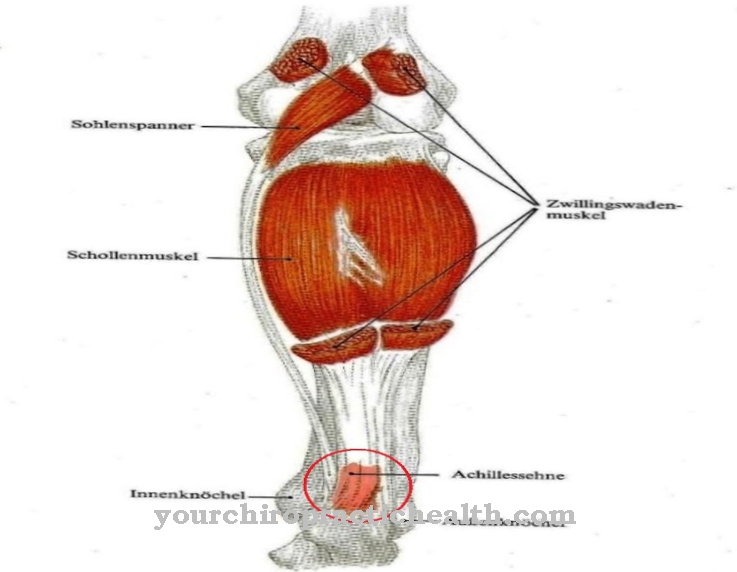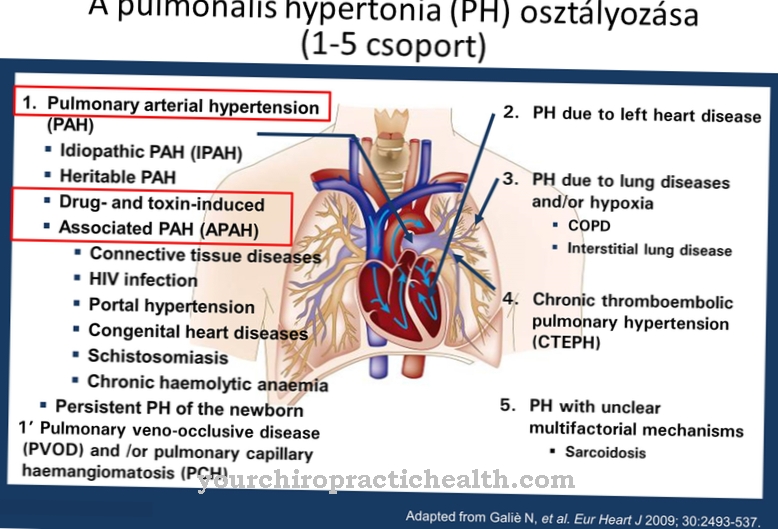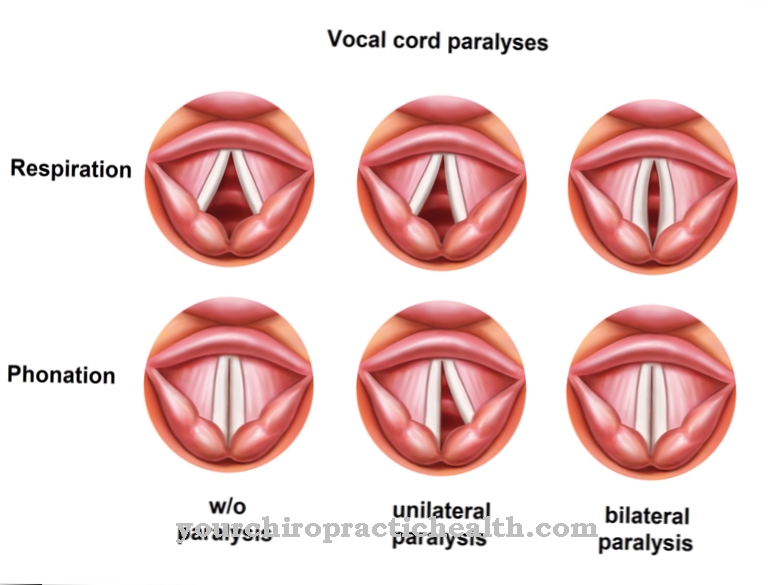Of the Central sulcus is an area in the cerebrum of the human brain. It is a furrow located between the precentral and postcentral gyrus. This separates the frontal from the parietal lobe.
What is the central sulcus?
The sulcus centralis is called Central furrow designated. It is a groove that separates different regions around the human brain. This makes the central sulcus a part of the central nervous system. Following its name, it plays a central role.
The human brain is divided into two halves. These are in turn divided into four further regions. The frontal lobe is located in the anterior area of the cerebral cortex. This merges into the parietal lobe approximately in the middle of the skullcap. This transition is formed by the central sulcus. It separates the motor cortex from the somatosensory cortex. It thus separates the precentral gyrus from the postcentral gyrus. The movement control takes place in the precentral gyrus.
The postcentral gyrus is of great importance for perception and somatosensory processing. The central sulcus runs transversely and is also connected to the hemispherical gap. This is the longitudinal furrow of the human brain, also known as the interhemispheric fissure. The sulcus centralis was first described in 1786. This was done by the French doctor Vicq d'Azyr.
Anatomy & structure
In medicine, a sulcus is a groove or furrow in the brain. As a central furrow, the sulcus centralis is a very long groove within the human brain.
The cerebrum is divided from the outside into two hemispheres, which are separated by the fissura longitudinalis cerebri. These are the left and right hemispheres of the brain. They are connected to one another by the beam, the corpus callosum. Both hemispheres can be divided into four lobes. These are the frontal, parietal, temporal and occipital lobes. The frontal lobe, also called the frontal lobe, begins at the anterior cerebral pole. This is also known as the frontal pole.
The frontal lobe ends posteriorly at the central sulcus. The paracentral lobe wraps itself around the central sulcus. This is the transition from the precentral gyrus to the postcentral gyus. It represents the boundary between the frontal and parietal lobes. The primary somatosensitive cortex extends into the cerebral convolutions. It begins in the anterior area at the central sulcus and ends in the lateral sulcus. The central sulcus runs transversely on both sides. It is located on the surface of the brain.
Function & tasks
Sulci basically have the task of separating different regions or convolutions in the human brain. Various sulci run through all areas of the cerebral cortex in order to separate the brain areas from one another. The paths of the channels mostly run across and are curved. They adapt to the structures and size of the surrounding tissue. They have a characteristic look.
This is wavy and uneven. The central sulcus is characterized by its size. It is a central furrow that is particularly large or long. The central sulci thus offers alternative options for movements of the tissue within the brain structures. So if there is swelling or bleeding, there is space for it in a furrow. The central sulcus is one of the most important sulci. It clearly separates the frontal and parietal lobes. This delimitation enables a visual separation of brain regions.
In addition, there is a functional separation here. The central sulcus helps in the investigation of the causes of complaints through its delimitation function. The furrow has an important role in surgical interventions. They enable the surgeon to recognize and use a clean separation of the tissue structures. The precentral gyrus processes the motor skills, while the postcentral gyrus processes the sensations. This clear delimitation of the various functions is carried out by the sulcus centralis in terms of content and appearance.
The complex structures of the human brain mean that some functions cannot be clearly separated from one another. Here, however, it is possible to include and demarcate the area through the central furrow. This is important when making diagnoses as well as during surgical interventions.
You can find your medication here
➔ Medicines against memory disorders and forgetfulnessDiseases
Discomfort and lesions within the human skull have various causes. Most of them are brought about in everyday life by falls, bruises or accidents. Lesions can cause bleeding, which in turn causes brain swelling.
As the given skull shape means that the tissue has few alternatives, there is quickly a lack of space. The consequences are often headaches or a feeling of pressure. In severe cases, permanent bleeding can occur, which can trigger strokes, epilepsy or impaired consciousness. The development of tumors in the brain also lead to space restrictions with corresponding complaints. In addition, there is also the risk that tumor cells can loosen and be transported to another part of the human organism via the blood. New metastases can form there.
Lesions of the precentral gyrus result in motor deficits. The voluntary motor skills are restricted or fail. Lesions of the postcentral gyrus result in a severe limitation in the sensation of touch. Pressure, temperature and pain can no longer be felt to a sufficient extent. This can have life-threatening consequences in everyday life. In addition, the lesions can lead to a local loss of perception.
Some complaints can be traced back to nerve damage. Mostly it's inflammation.













.jpg)

.jpg)
.jpg)











.jpg)